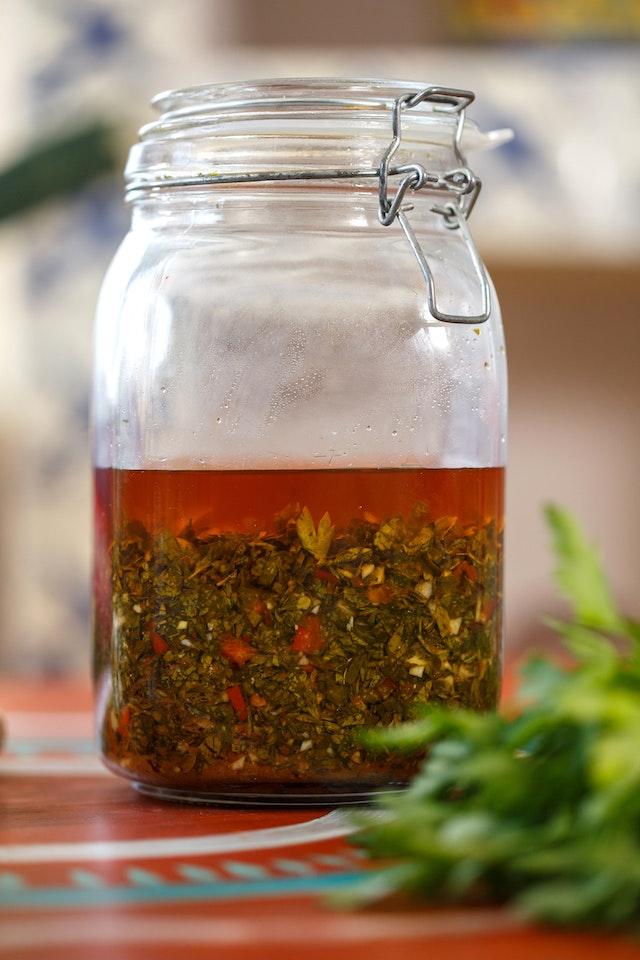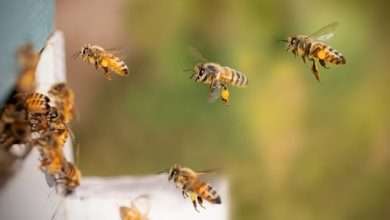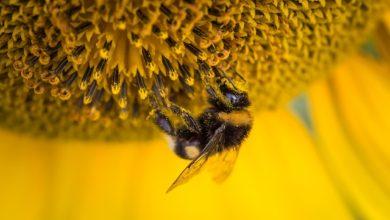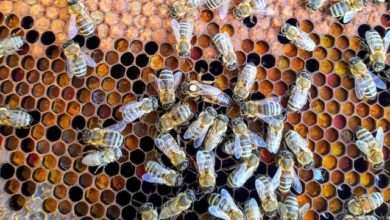What is Bee Tea?
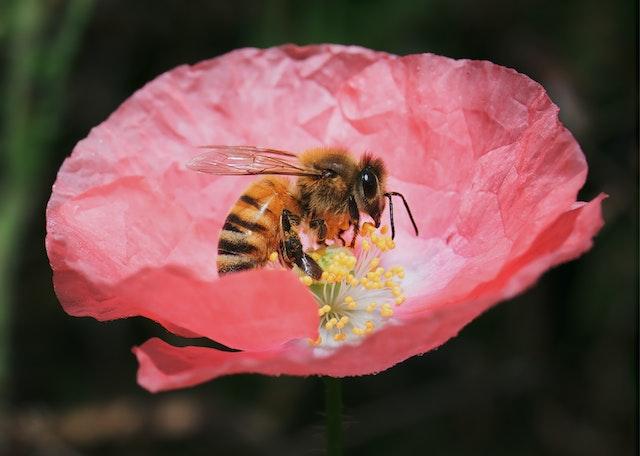
In late summer or fall if a hive does not have enough honey stores to take it through winter the bees are always given a feeding supplement known as bee tea. Thyme tea with the addition of mineral salt or 2:1 sugar syrup made with brewed chamomile is always the content in the bee tea.
To increase honey bee colony vitality and to encourage population growth in the colony an organic feeding product known as bee tea is always given to the colony.
Egg laying by the queen is always stimulated by this syrup addictive. Additionally, ensuring a strong, healthy, and productive colony and furthering brood production can be done using this syrup addictive. If tea is good for practitioners, then it must be good for bees is what this oddity believes in.
However, bees are not humans. Our good health depends on many different plant parts that we eat. While humans can eat leaves, petals, roots, or stems of different plants, bees can only eat nectar and pollen. Because of this, chances are extremely high that what humans from different parts of plants such as roots, leaves, petals, and frames for their good health may not be healthy to bees. But who knows, I assume they do no harm.
Dirty water, nectar, and pollen are where bees do normally derive their nutrients. A wide range of minerals, decomposing organic matter, and single-celled organisms are available in abundance in the dirty water preferred by bees. Which plants and how decomposed they are will vary widely despite dirty water containing plant parts. Besides, deciding if she wants to drink the dirty water is up to the bee.
Beekeepers make bee tee out of dried and crushed herbs and flowers if you are not familiar with this trend. Chamomile, hyssop, dandelion petals, lemon balm, nettle, and yarrow are the most popular recipes.
Honey-B-Healthy or an equivalent mixture of lemongrass, and spearmint oils along with syrup or honey are always added by many beekeepers when making bee tea.
Without a sweetener, a pan of soggy leaves in otherwise clean tap water holds a little attraction for your average apid, and therefore to attract bees to the tea such addictive are added.
Despite mineral salt being known to be beneficial to bees, I remain skeptical because I have never read anything about the health effects of brewed leaves of any sort. The addition of lemongrass and spearmint oils which have been shown in laboratory experiments to enhance honey bee health is the optional formula.
However, I’m not sure you are getting anything you would not get with just regular 2:1 syrup and a little mineral salt if you use just the sugar, salt, and tea without the essential oils.
You could use all dried or all fresh, however, a mix of dried and fresh herbs and flowers is what I used:
• Heat three cups of water to boiling
• Prepare a tea mix:
– ½ teaspoon organic dried chamomile
– ½ teaspoon organic dried yarrow
– ½ teaspoon organic dried nettle
– ½ organic dried peppermint
– ¼ teaspoon organic dried sage
– 2 fresh dandelion flowers
– ½ teaspoon organic fresh or dried hyssop leaves
– ½ teaspoon organic fresh or dried thyme leaves
– 2-3 big organic fresh or dried lemon balm leaves
Pour 3 cups of boiling water over a large tea infuser (after steeping you could use cheesecloth, or simply put them in a jar and then strain them) after putting all the herbs into it. Wait for between 10 to 15 minutes while it is steeping and take 3 cups of cold water and add.
Surprisingly the result is a strong-smelling infusion as you will find out. If you want to know which other herbs you can add to the tea then you should check out the original recipe.
Stir in one cup of high-quality organic local honey after it has cooled to room temperature or when it is lukewarm.
Bee Tea Feeders
You can fill the tray with little rocks using a chicken watering container. Instead of little rocks using a quart-sized bee feeder will also work. (If you need the reminder for future use, you can store it in a fridge).
Bees do have times of stress such as a new colony and hive, early in the season, late in the season and many more and putting the tea out where they can take it if they need it and use it during such times is the idea. The bees had plenty of nectar and pollen to forage for since I left it out for around one week until it seemed they were doing just fine.
Using Mason Jars with lids that come, with Boardman Feeders is another excellent option. Additionally, you can use a nail and hammer to make tiny pinholes if you opt on using your lids. It is just fine for herbs to float in tea since as it settles the holes in the jar will not get clogged.
When refilling you should leave herb leaves in the jar lid. The rate at which the bees consume the tea should be noted. They probably do not need the tea should they not empty jars(1pt.) for a few days like three or more.
Apart from feeding bees in early spring and fall to boost their immune system, you should only feed them when they need it. Further, to make sure it does not ferment, you should check tea in warm/hot weather.
You should replace it with fresh tea if it ferments (you can smell it so as to confirm whether it has fermented or not. The vessels that you put on bee tea should be kept clean. Before reusing jars, you should clean them especially if you notice mold or cloudiness. Adding some essential oils may help retard mold growth and fermentation in feeders regardless of any health benefits.
Many beekeepers believe this supplement is beneficial for their bees despite the lack of scientific research.

